Have you ever wondered what you would do without your oven and range top? For some of us, this is not a question at all, but an everyday part of life.
I have been using an electric skillet frequently for the last several years, because it cooks more evenly than my stove top frying pan, and cleaning it is a breeze. As such, I am here to teach you how to use an electric skillet.

Believe it or not, there is almost nothing that you cannot cook with one of these things! There are multiple electric skillet uses such as frying, slow-cooking, boiling, baking, etc.
Whether you're an occasional user of electric skillets or a hardcore user like myself, this little tutorial should help you to increase your skills and thus become a true electric skillet master!
Jump to:
What You Will Need To Follow This Tutorial:
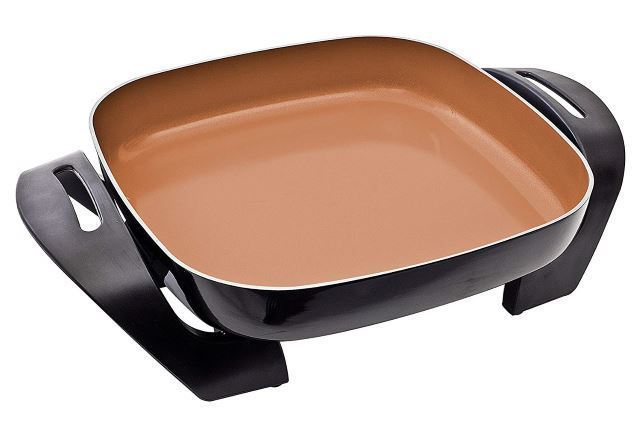
A standard-size electric skillet: Some manufacturers make models that are exceptionally large or small, but these are special tools for special purposes. This tutorial will focus on the standard-size device, which will be roughly 1 foot by 1 foot. Don't worry if yours is off by an inch or two, as this will make very little difference.
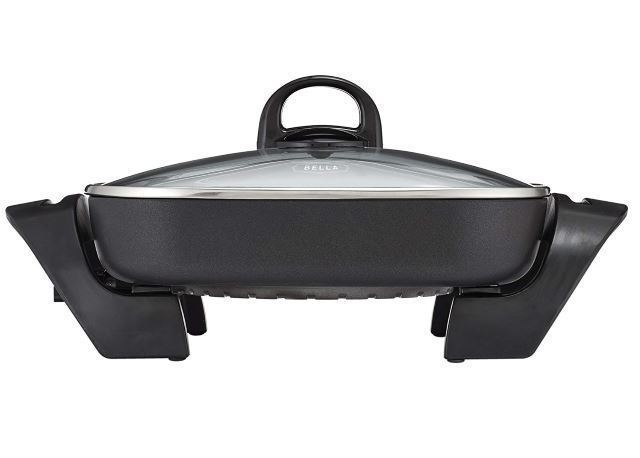
A lid that fits your skillet: This is not necessary for all dishes but is absolutely required for some. Most electric skillets on the market come with a lid.
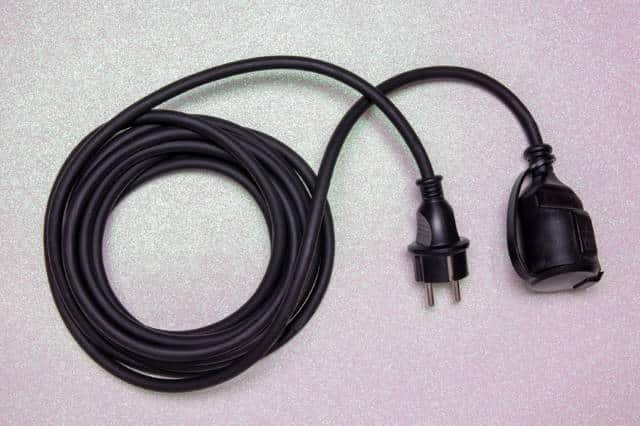
A thick extension cord (optional): Like any appliance that contains a heating element, these devices can be a fire hazard if used improperly. Unless you situate them right next to an electrical outlet, you will probably need an extension cord. The cord needs to be good and thick to handle the power load without heating up.
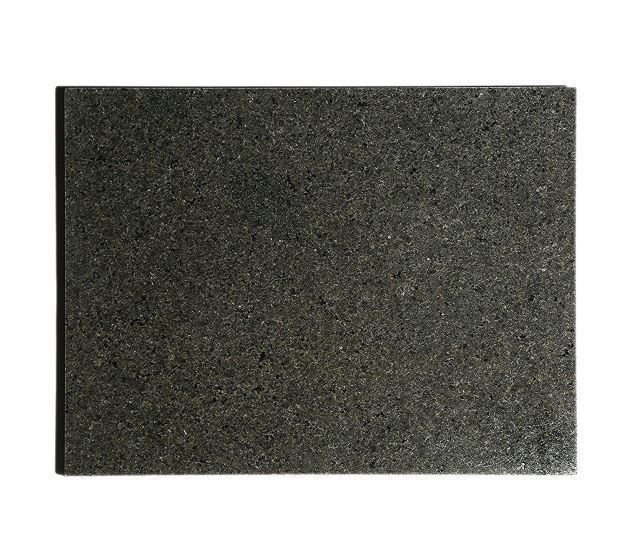
A heat-resistant slab (optional): This can be used underneath the skillet as extra protection for the surfaces of your kitchen from possible heat damage. A wide ceramic tile is a good choice, as is a block of stone such as a granite cutting board. Ideally, your heat slab should be at least one square foot.
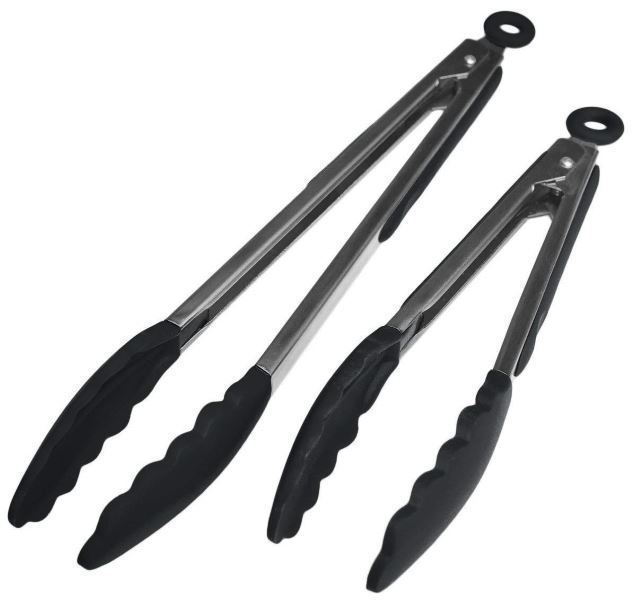
A strong set of tongs(optional): These are handy because it is harder to use a standard potholder when removing an item from your e-skillet. A large pair of tongs will make it much easier.
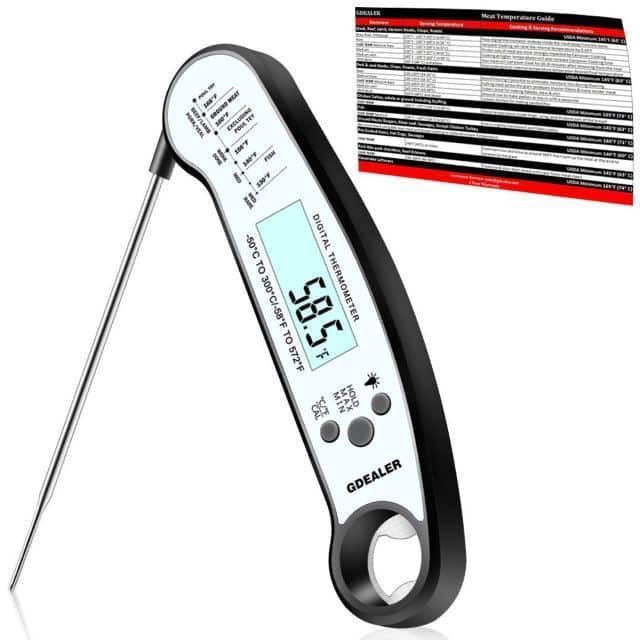
A small meat thermometer: This is essential for proper food safety. Remember, beef and pork must be cooked to an internal temperature of 145°F, ground beef to 160°F, while poultry requires a temperature of 165°F. Unless you just like food poisoning, you will definitely need this tool.
Temperature Dials
The standard temperature controls on electric skillets range from simmer or warm to 450°F on a dial, depending on the model. Because of this, you will have more control over the temperature than you would using a frying pan on a stovetop. To learn all about electric skillet temperatures, read this article.
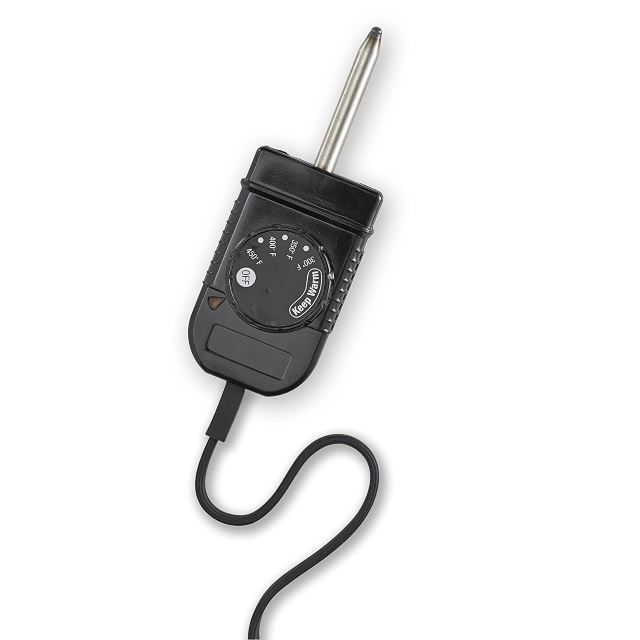
Non-Stick Properties
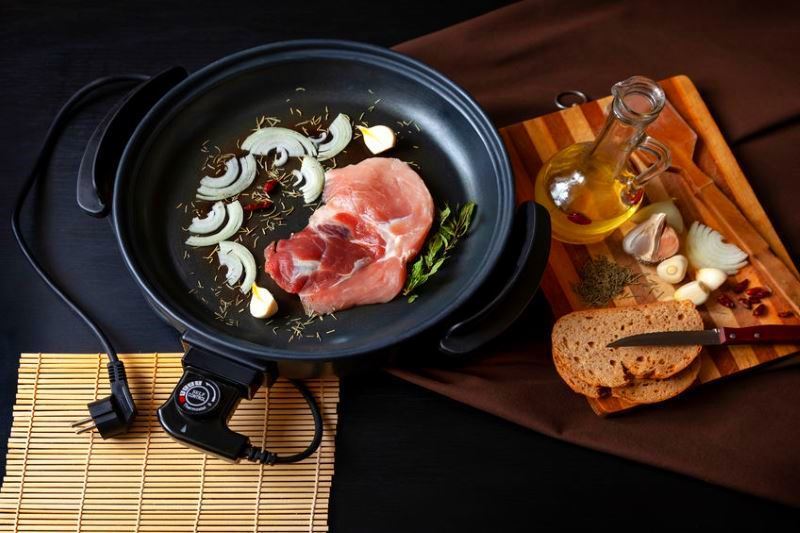
Most electric skillet models available today have a non-stick coating, whether it be teflon or ceramic. As such, it is important to stay clear of metal utensils, unless you are using a stainless steel model. Instead, opt for wooden, plastic or silicone cooking utensils.
Sauté With Your Electric Frying Pan
Pretty much anything you can do with a frying pan, you can do with an electric one and then some. Sautéing is a very common cooking method that utilizes a skillet.
It will require a little cooking oil and turning the heat up on the dial until it reaches the desired temperature. While the skillet is heating, an indicator light will remain on. Once the skillet reaches the correct temperature, that light will go off.
Here are some examples of of what you can sauté in your electric skillet:
Frying
Electric frying pans are great for frying foods! It is important to note that although you can fry in your electric skillet, you normally cannot deep dry in it.
There are some models that are deeper than others, but in most manuals I've seen, they warn you against deep frying and note how much oil you can add to the skillet.
Here are some recipes you can fry up:
Cube steak can be used as a quick fry in the electric skillet as well.
Or, try these Squash Cakes:

- First, get a small bowl and fill it about halfway with all-purpose white flour. Add a pinch of salt and a little bit of lemon pepper, then add a little bit of water and stir.
- It is important to get the consistency right, so add your water a little bit at a time until you have something that is about the consistency of pudding. Here's another of those cooking videos to help you get the right idea.
- Next, take a nice big squash (I recommend yellow squash but any kind will do), and slice it, making sure to discard the end pieces. Each slice should be about twice as thick as a quarter, but don't worry if you can't get it exactly right. Add a little oil or butter to the electric frying pan and turn the dial to 350°F.
- Now add just one or two drops of water from your fingertips. This water will tell you when the oil is ready. Be sure not to use too much oil, as it is wasteful and results in a greasy and unhealthy meal.
- When the oil begins to pop, take your squash slices one at a time and dip them in the batter before putting them face-down in the skillet. Put the lid on and wait about ten minutes.
- Using a plastic or silicone spatula (for use on a non-stick skillet), carefully flip each piece and allow to cook for about five more minutes. When the breading is nice and brown, you are done, but one more step is needed to make it right.
- Take some cherry tomatoes and cut out their centers, filling them instead with Parmesan cheese. Put one loaded tomato on top of each squash cake and it's ready to serve.
PRO TIP: Use a large knife when cutting the squash. A smaller knife will bend and produce uneven cuts.
Slow Cooking With Your Electric Skillet
Slow cooking/braising is probably the easiest way to use your electric skillet, as it involves a lot of down time. For this, it is recommended that you have a relatively deep skillet, as some of the more shallow ones are not well-suited for this recipe.
PRO TIP: If your roast is a thick slab that prevents you from covering the skillet with a lid, you may need to slice it in half first.
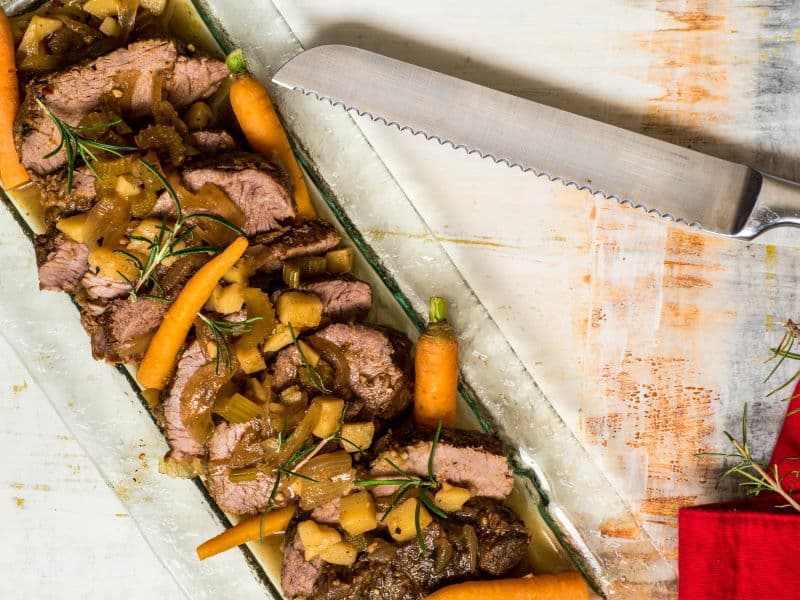
Electric Skillet Pot Roast Full Recipe
All you have to do to slow cook is preheat the skillet and place the meat in the empty skillet and sear the outside.
PRO TIP: Using tongs can help you to easily maneuver the roast around in the skillet.
Next, add in your vegetables, broth and spices and simmer with the lid on. Now for the simmering. All you need to do is set your skillet to 200°F or ‘SIMMER’ and let it cook nice and slow. You may want to check the meat with a thermometer every now and then, and you may also want to check the vegetables for softness.
Other recipes you can slow cook in your skillet:
Using Your Electric Frying Pan As An Oven
Most of you don't really need to do this, because you should have a standard oven in your house. However, you may still want to consider this method as a way to save electricity and avoid heating up the kitchen, as a full-size oven is a major power hog.
I personally love baking in my electric skillet, as it's very easy and I seem to be less likely to over-bake bread and cakes, like this skillet yogurt cake, etc.
If you think about it, the only real difference between a range top and an oven is confinement. By confining the heat, the entire surface of the food is cooked evenly and efficiently. Therefore, we just have to confine the heat. There is no special trick to this, as you just use the lid.
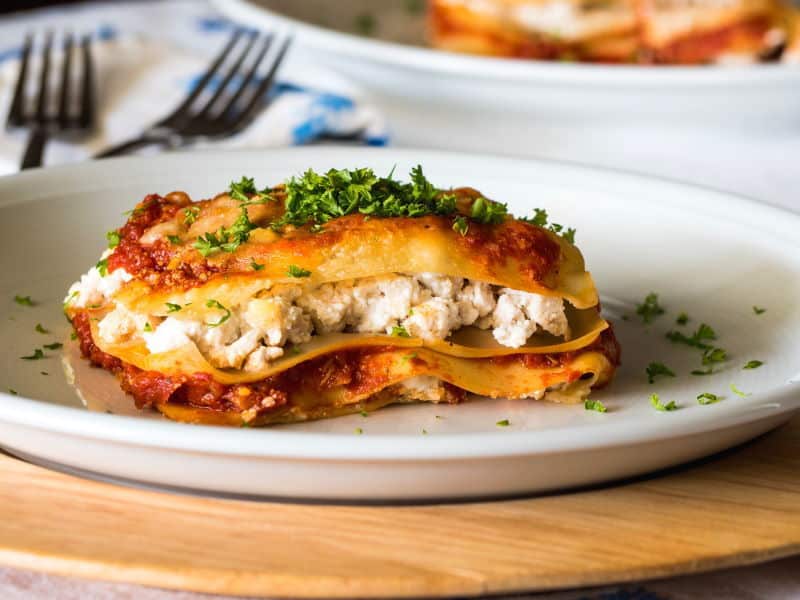
You can bake a lasagna in your electric skillet!
However, we still have one little difference between our electric frying pan with a lid and our oven. The other difference is the rack. An oven cooks its payload by elevating it above the heat source.
This keeps the bottom from burning as easily. To duplicate this effect in an electric skillet, you just need a small metal rack that will fit the floor of your frying pan. Only an inch or two of elevation is needed.
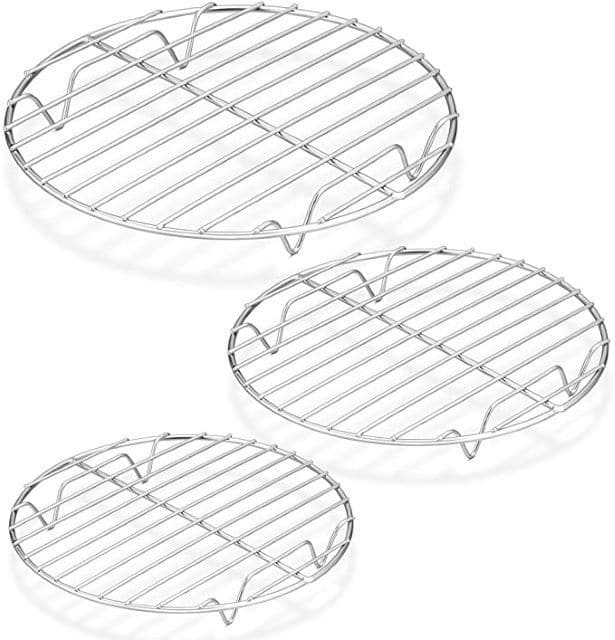
Pro Tip: If you don't have anything like this, you can line the bottom of the skillet with metal skewers or crumpled foil balls (careful not to scratch) for a similar effect. Doing this will give you an electric frying pan that can be used as an oven, though you will need to cook at slightly lower temperatures to get similar results.
Try these baking recipes in your skillet:
Or even a quick & tasty electric skillet pizza!
Cool & Clean

Once you have finished cooking a delicious electric skillet meal, it is important to unplug the unit and let it cool before carrying on to the next step: cleaning. Here is a detailed tutorial on how to clean your electric skillet.
Conclusion
Was this tutorial helpful? I hope so, because I have tried very hard to impart my electric frying pan wisdom to you in a way that is informative and easy to follow. As you can see, it is fully possible to cook nearly anything in your e-skillet.
I believe it is important for people to be familiar with alternative methods for all of life's essential tasks, of which cooking is definitely one. After all, you never know when your standard methods might become unusable.
The electric skillet cooking possibilities do not end here. There are many electric frying pan recipes available to help familiarize yourself with how to use this handy tool.
Feel free to leave your comments below, and to share this article with anyone else who might be interested.
Some more tasty recipes to try in your electric skillet:
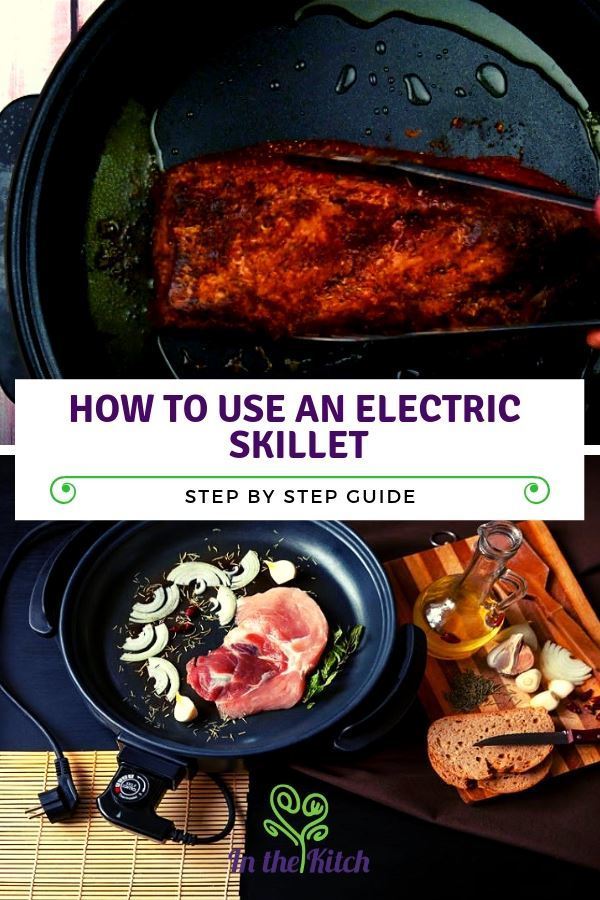

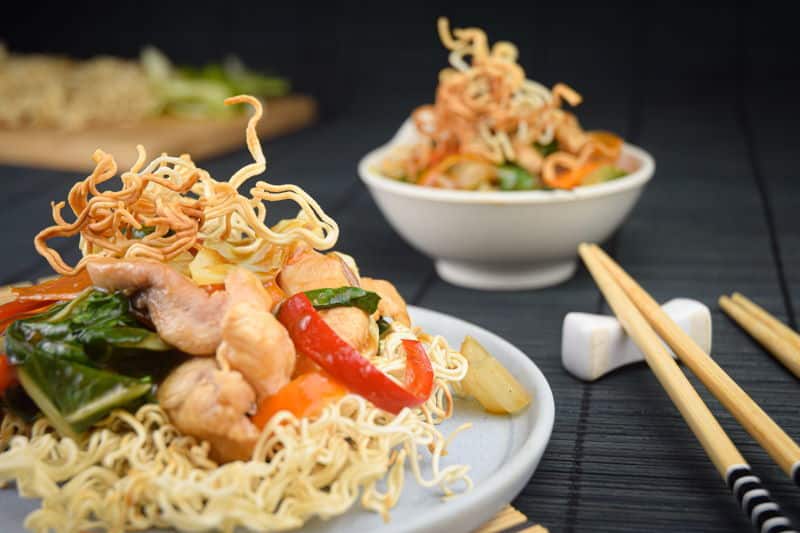
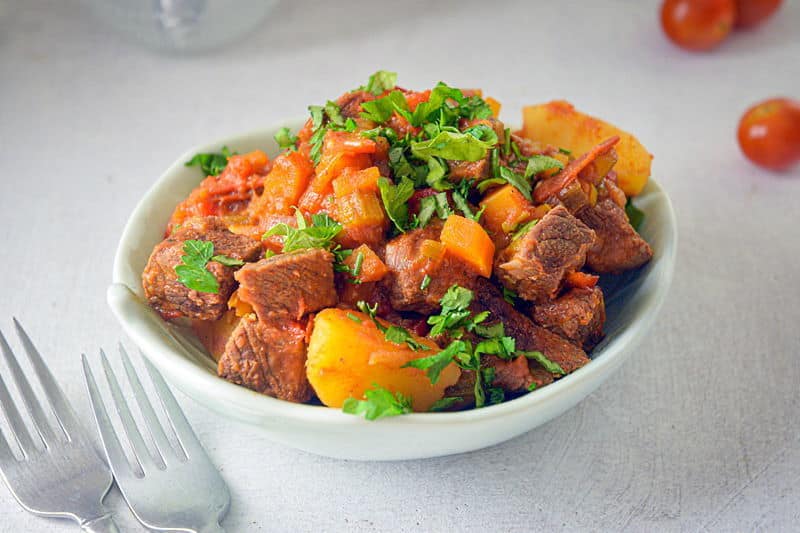
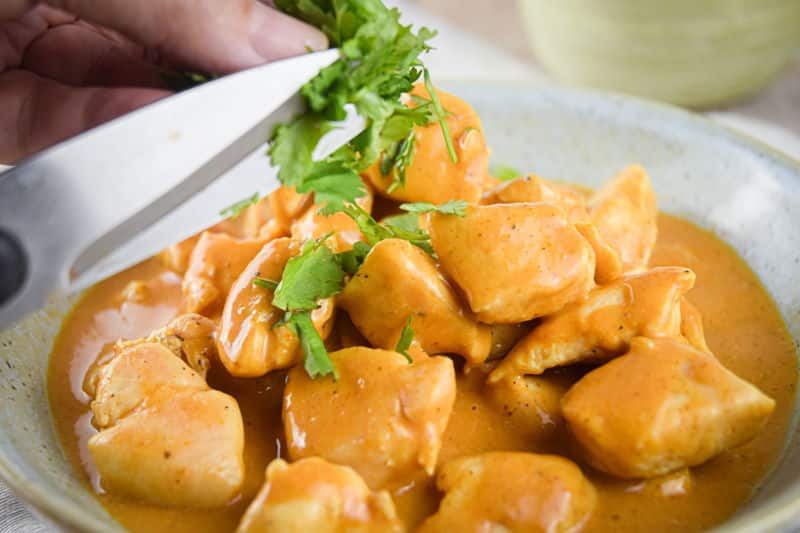

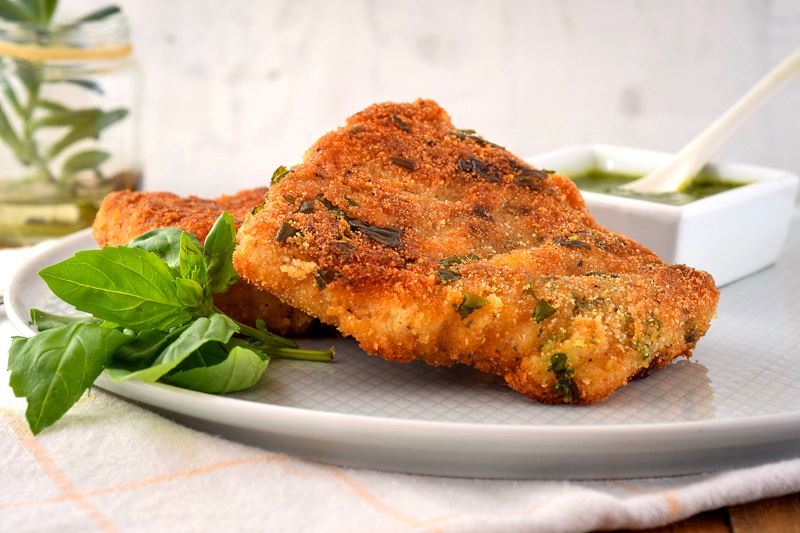
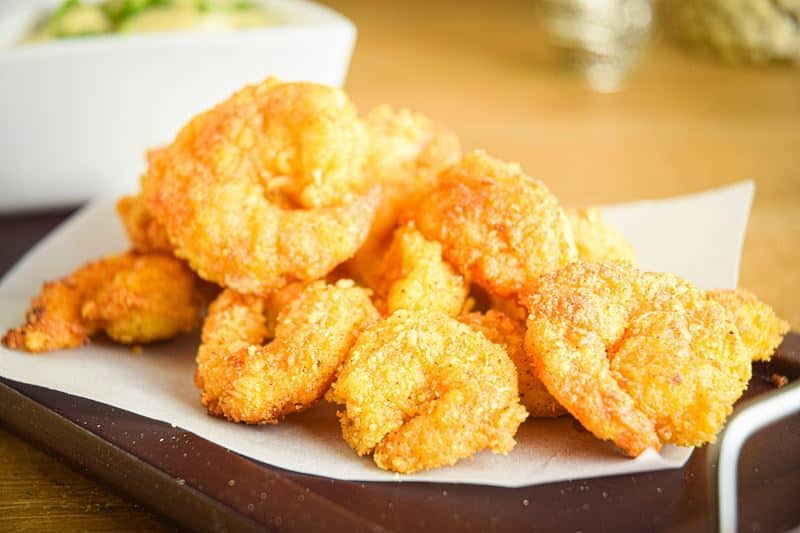
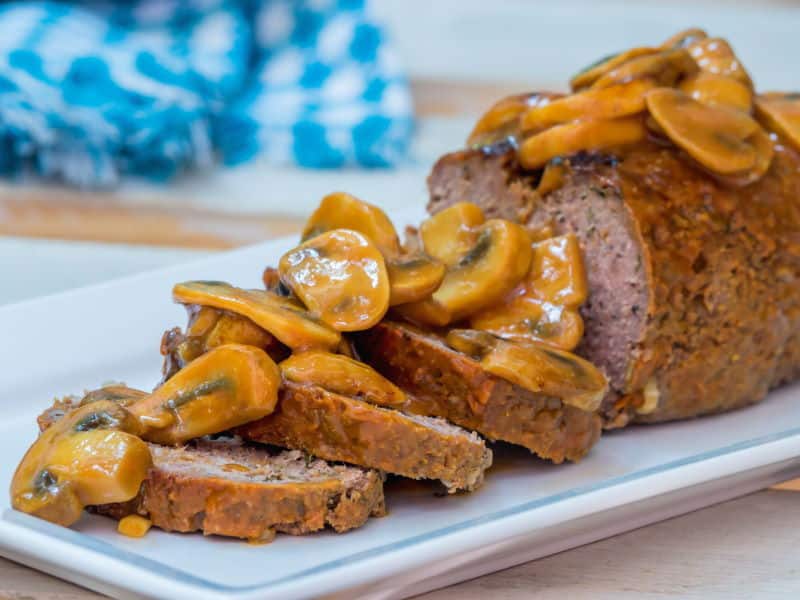
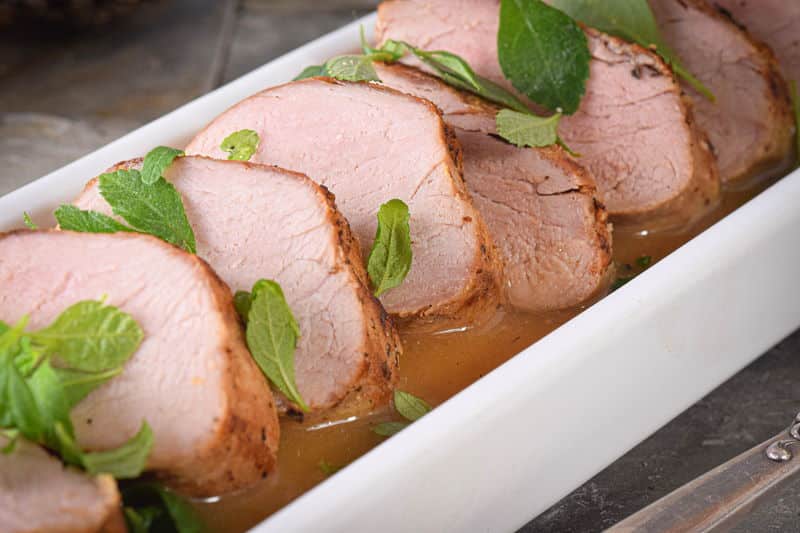
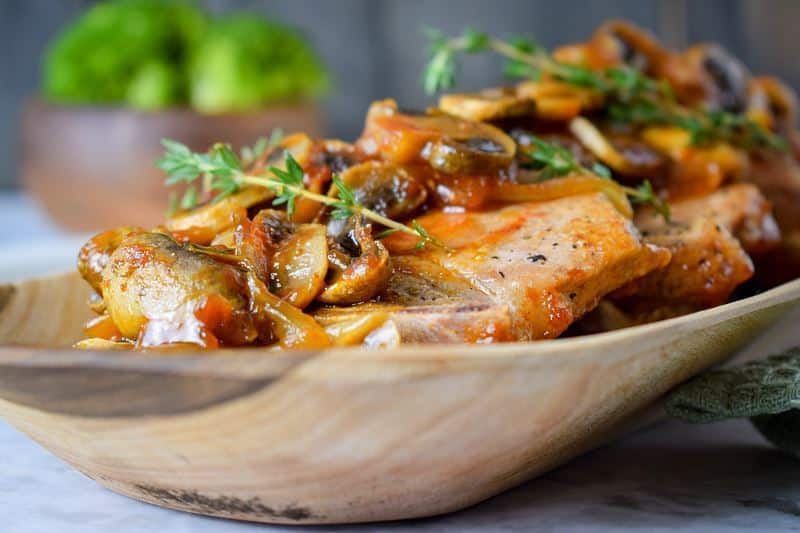
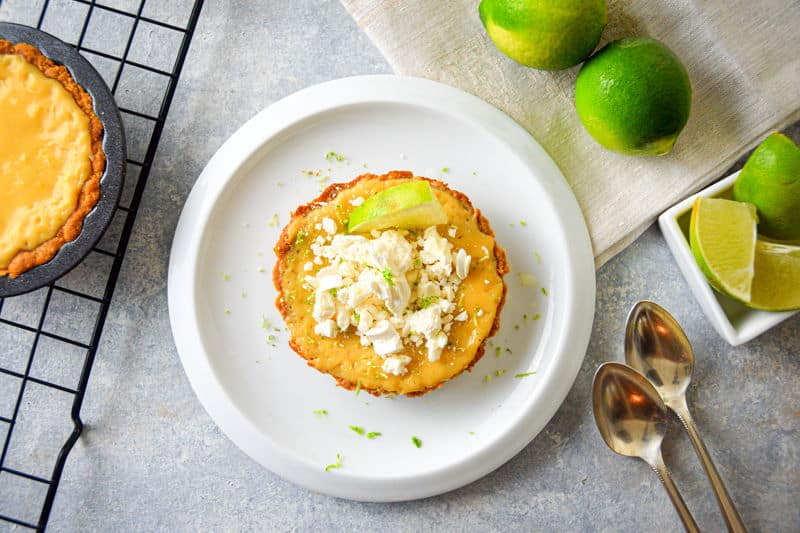


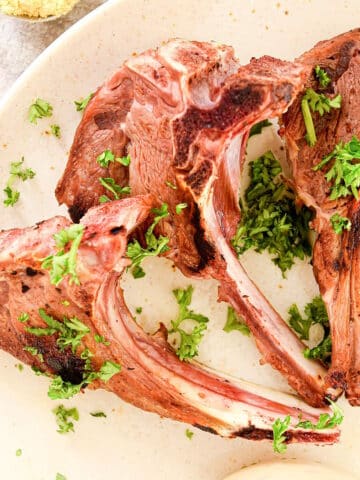
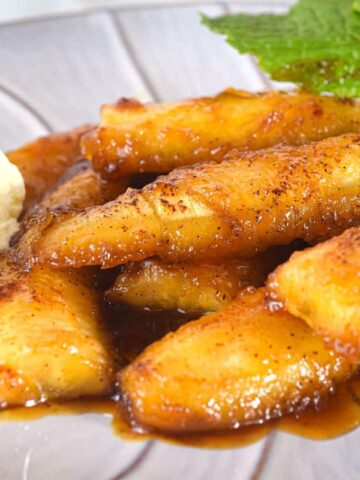

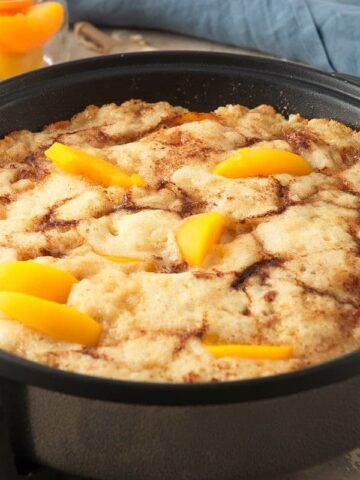
Glenda says
I like your ideas.. i have a small electric skillet.. i have cooked salmon, hamburgers, eggs, and its only a 8 inch skillet.. its just me.. also, i use microwave for cooking squash and soups.. i am alone and it dont take much to for me.. its a real big switch for me,, i used ot have all the good appliances in my home, and as a widow, i just cant live alone anymore.. my daughter tries, but still, its not that southern touch that im looking for.. lol..
Joss Dyckson says
Thanks, Glenda! I really appreciate the comment. I can see how that would be a big switch. So sorry to hear about your loss.
Cheriese says
Very recently a BIG (there is only my husband and myself to cook for) brand new 2023 Dash 14" round skillet ( which is actually larger than 14") fell into my lap. The one time I have used it , it cooked like an electric skillet version of a dream. My mom used an electric skillet when I was a child....I am now 70 . Things have changed LOL! I have been scouring online for something I can use under this mini swimming pool to protect my counter from excess heat and to help contain any mess. I have been serching online electric cookboos but they mostly had only recipes. What I need is k nowledge on how to cook with this electric skillet., esp making less food than there is room to make! Plus "batches" such as cili or ...can I cook a batch of old fashion oats oatmeal in an electric skillet? (thats my big question today). But overall I want to thank you for writing a tutorial on how to use an electric skillet. It has enabled me to be hopeful instead of just frustrated about what I am going to do with this lovely but BIG applaiance!
Stay well , be happy
Cheriese N.
Joss Dyckson says
Thanks for the comment, Chariese! I appreciate it. To answer your question about old fashioned oats, yes you can definitely cook oats in an electric skillet. You can just boil water in the skillet and follow the directions on the package from there (the same way you would in a pot). I have a recipe coming out for that soon so stay tuned! You can check out this post for some electric skillet recipes to get you started: https://inthekitch.net/electric-skillet-recipes/ Hope that helps with your frustrations!
Karen Lee Klopich says
I made.the best pork ribs in my.electric.skillet
Joss D says
Nice! Great things can happen in the electric skillet. 🙂 Thanks for the comment Karen.
meredith says
I'd like to cook a breakfast casserole (bread, eggs, milk, sausage, veggies) in my electric skillet so I can easily transport it to feed a school team. Any tips on temp, baking time so the eggs cook through before the bottom burns? I can't find anything on this, so maybe it's not feasible?
Joss D says
Hi Meredith, I think the best thing to do would be to bake it in the electric skillet, like in this electric skillet frittata recipe. (You can place a small rack or crumpled up foil balls on the bottom of the skillet and place an oven-safe casserole dish on top to bake the casserole. That way the casserole isn't touching the hot surface directly.) That recipe has the details for time and temperature.
Carole Youck says
THE HEATING COILS ON MY ELECTRIC RIVAL SKILET DO NOT WORK ANYMORE, BUT PAN AND LID IN GOOD SHAPE CAN I USETHIS IN AN OVEN FOR LARGE MEALS SUCH AS LASAGNA ETC
Joss D says
Hi Carole, I think that is a question for the manufacturer, although I would say it's probably not a good idea as it wasn't designed to go in the oven.
Melissa Earl says
Hello. I’ve had my electric skillet for a few years now and it’s starting to stick. What can I do to avoid this? Thank you
Joss D says
Hi Melissa. What kind of electric skillet do you have? Sticking can happen over time if you've scratched the non-stick coating, used aerosol cooking sprays, high heat, or from a build-up of food residue. Cleaning with warm, soapy water after each use and greasing with a high smoke-point oil before cooking should help. You might also want to try a baking soda paste (equal parts water and baking soda) to remove a build up of residue, let it soak for about an hour in the pan, lightly scrub with a non-scratch pad and then wipe it away/dry the pan. Hope that helps!